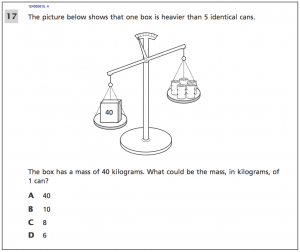(A tip mostly for newbies.)
In this time of preplanned curricula and common lesson plans, teachers often enter the classroom with their day scripted. For the first five to ten minutes, we do the multiplication story problem reinforcing the idea that distance equals rate times time. For the next twenty minutes we break into groups. Group 1 works on the latest software program, Group 2 creates a time/distance chart, and Group 3 learns how to move the variables around, discovering that distance divided by time will reveal the rate at which the train is travelling.
We have a sensible, probably viable lesson plan here. The teacher must make sure that laptops or tablets are not being used to kill worms or scale walls to get to gold coins on the next level, but our objectives are easily discerned and presumably fit the learning standards for the grade, or represent needed remediation.
Eduhonesty: The details of these plans eat up classroom minutes quickly. Between shutting down the worm games, checking the charts, and explaining how we find the train’s speed, teachers are constantly on the move. With luck, as we switch from group to group, we find students producing expected results.
With this post, I want to red-flag an alternative scenario. If you are shifting between groups and bogging down, stopping to explain and re-explain earlier material.. if you are regularly trying to help students figure out how “t” can be “time” and how to define a “rate”… if the math answers you check seem to be coming out wrong… YOU ARE PROBABLY IMPLEMENTING THE WRONG LESSON PLAN.
Lesson plans should fit students. Too often today, we try to make students fit our lesson plans instead. If your kids don’t grasp the day’s concept, maybe you need to explain that concept differently. Your approach could be part of the confusion. But if you were told to teach 5th grade math to a group of 3rd graders who simply were not ready for that content, your problems are bigger than a few clarifications will ever be able to fix.
What’s the next, best step? You know your students and I’d say that’s up to you, based on what you are seeing. I would separate out the kids who understand the material. I’d find an enrichment activity for them to do while I worked with the lost and confused. Then I’d review the missing, basic algebra or whatever factor or concept I believe has forced other students off-track. I might even create a short, diagnostic quiz to figure out where different kids leapt that track. Is it algebraic manipulation or simple division itself?
Just because higher-ups or more experienced teachers handed you a lesson plan, please don’t blindly follow the entries on that sheet of paper. It’s your classroom and every single classroom is filled with a different mix of nuts and fruits. State standards and annual state tests have led to a frightening amount of pie-in-the-sky planning.
If your kids need division, please take the time to teach them division. When you find out what’s wrong, fill in the holes in student background knowledge. Make sure you can document and provide data to show what you are doing and why, but if your kids have leapt the track, or never got on the week’s educational train in the first place, you must step off the track with them. You have to teach your kids where they are. If you try to teach them where someone else wants them to be, you will have a long, frustrating year. More importantly, so will those poor, confused kids.

